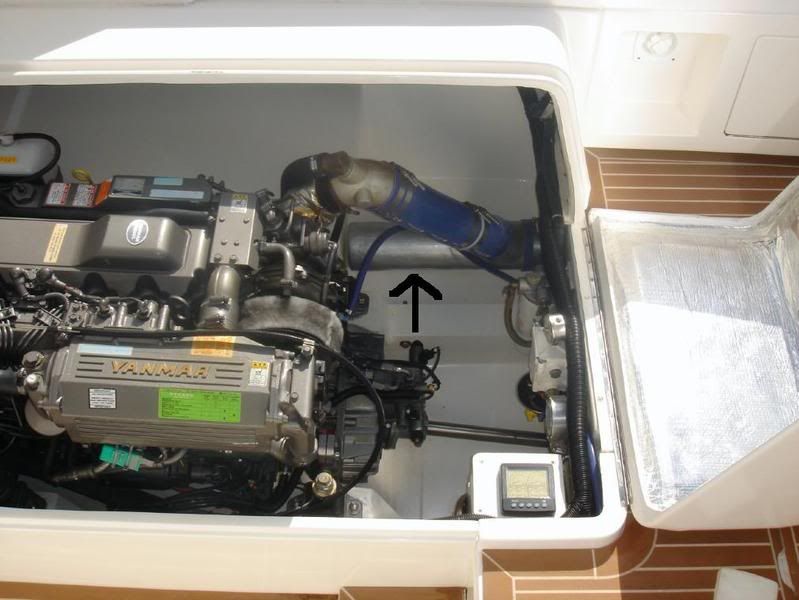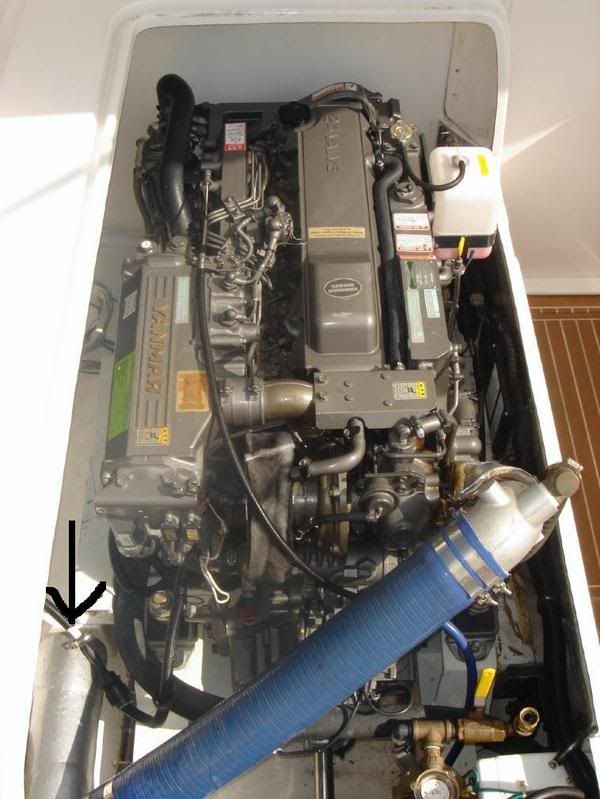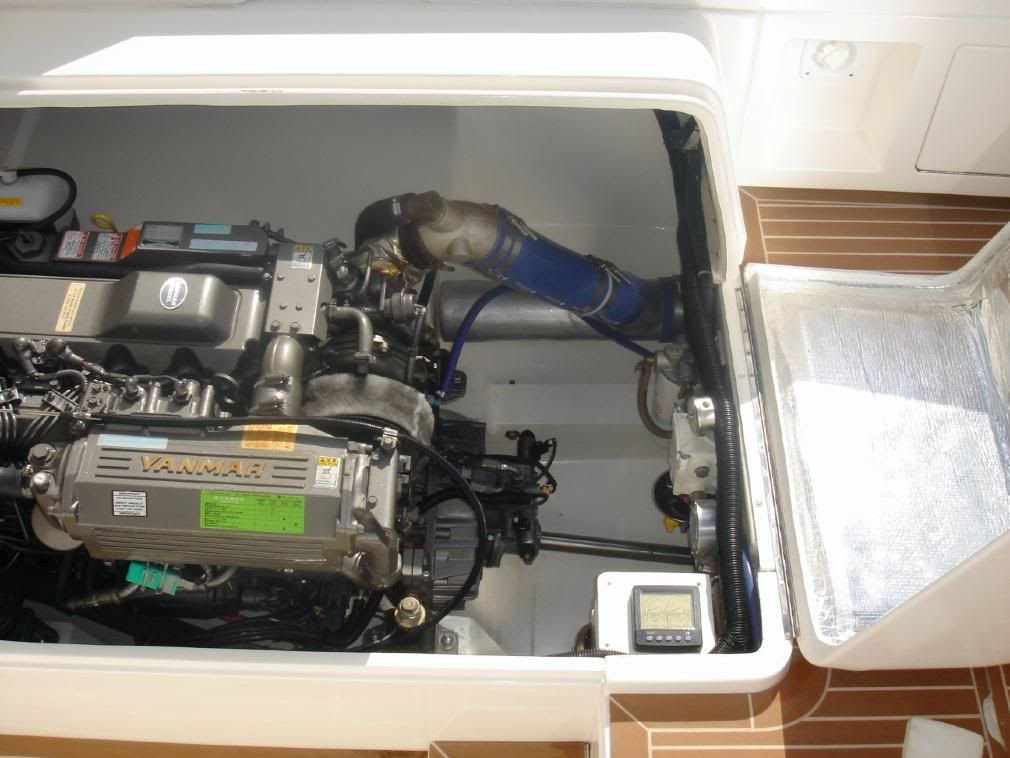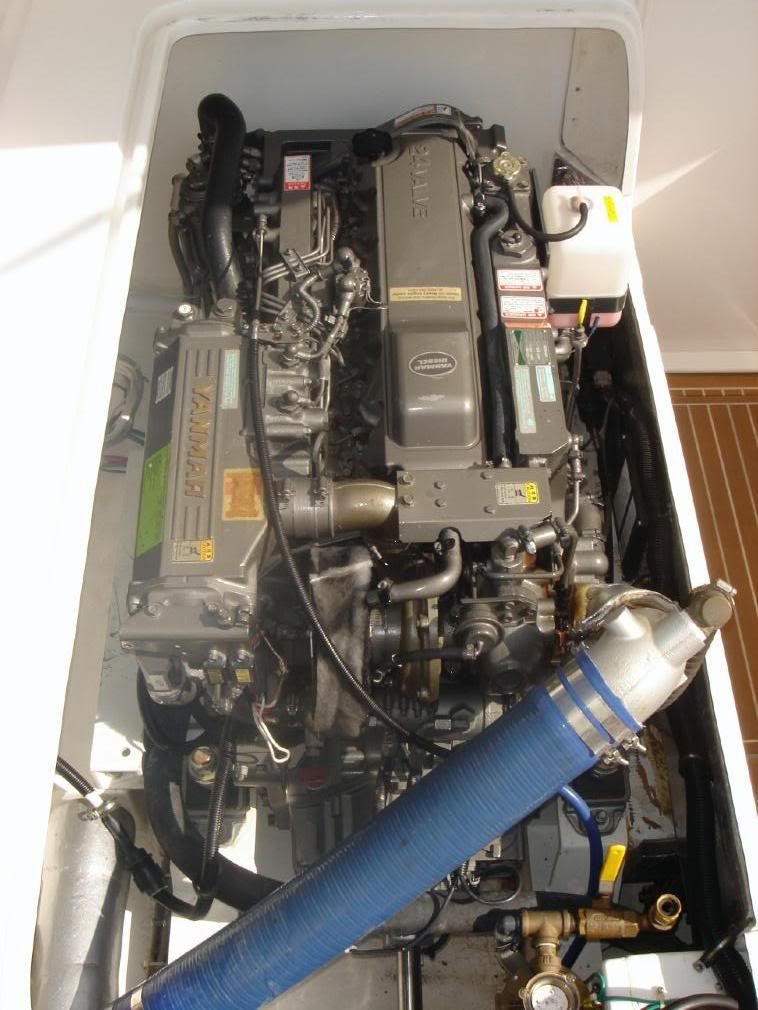surge tubes
Moderators: CaptPatrick, mike ohlstein, Bruce
- JohnCranston
- Senior Member
- Posts: 737
- Joined: Jul 8th, '06, 17:50
- Location: Spring, TX; Freeport TX
surge tubes
Gentlemen,
What are these?, and what are they used for?. Do I need them for the 315 Yanmar install? The mechanic wants to know if any b31 owners are installing them on their repowers.
Much thanks.
What are these?, and what are they used for?. Do I need them for the 315 Yanmar install? The mechanic wants to know if any b31 owners are installing them on their repowers.
Much thanks.
I'll never ruin a $50 buzz with a $4 sandwich
- ZeroCavity
- Senior Member
- Posts: 204
- Joined: Jul 10th, '06, 14:36
- Location: Naples, FL
Surge tubes are an extra precaution to prevent the ingestion of water into your engine.
From the installs I have seen they are located at the base of the dumps, where your exhaust goes into the transition from verticle to horizontal. They are pretty much a capped tube extending in the opposite direction to the flow of exhaust and water.
How well they work, I have no first hand knowledge. I know of installs but never really heard of anyone installing them because they had a problem. I'm sure someone will chime in with more info.
From the installs I have seen they are located at the base of the dumps, where your exhaust goes into the transition from verticle to horizontal. They are pretty much a capped tube extending in the opposite direction to the flow of exhaust and water.
How well they work, I have no first hand knowledge. I know of installs but never really heard of anyone installing them because they had a problem. I'm sure someone will chime in with more info.
Yes you need them. A surge tube allows water pushed from the exhaust to dump into a tube instead of pushing up and over the riser in marine applications. The B31 is a very low boat with its built down hull it is very difficult to achieve 12-14" from the center of the exhaust outlet to the waterline a surge tube is an extra measure of safety which makes it more difficult for water to be pushed into the exhaust riser and any open exhaust valve (potentially causing a hydraulic lock of a cylinder or the complete engine)
I would not build an exhaust system without a surge tube. If you plan on anchoring in any kind of weather or docking with the stern to the current you will need these tubes.
Good luck if I find the time I will post some pics of our installation as well, but zero cavity is right on the money with his shots. Ounce of prevention equals several thousands of dollars in repair.
I would not build an exhaust system without a surge tube. If you plan on anchoring in any kind of weather or docking with the stern to the current you will need these tubes.
Good luck if I find the time I will post some pics of our installation as well, but zero cavity is right on the money with his shots. Ounce of prevention equals several thousands of dollars in repair.
KR
JP
1977 RLDT "CHIMERA"
JP
1977 RLDT "CHIMERA"
- JohnCranston
- Senior Member
- Posts: 737
- Joined: Jul 8th, '06, 17:50
- Location: Spring, TX; Freeport TX
John,
I have edited the pictures for Pam to look at. The surge tubes (silver) are pointed out by the black arrows. They are located at the bottom of the rise tubes and extend forward of the junction where the tube starts upward. The effect is for surging water to take the path of least resistance, which would be on the same level as the exhausts, instead of heading up the rise tubes. Hope this helps you visualize the set up. Even I didn't notice it the first time I looked at the pictures.


I have edited the pictures for Pam to look at. The surge tubes (silver) are pointed out by the black arrows. They are located at the bottom of the rise tubes and extend forward of the junction where the tube starts upward. The effect is for surging water to take the path of least resistance, which would be on the same level as the exhausts, instead of heading up the rise tubes. Hope this helps you visualize the set up. Even I didn't notice it the first time I looked at the pictures.


Harv
John: Basically the horizontal exhaust tube extends forward of the place where it Y's up to the engine manifold. Surge tubes are 18 to 24 " long and the same diameter as the exhaust. They are just an extension of the exhaust pipe with a cap on the end. Any water that may be driven up the exhaust will go straight into the cul de sac of the surge tube rather than turning upward and being pushed into the engine as it would if a simple elbow were used to make the turn up to the engine. Once the wave or other event is over, the exhaust pressure will push the water back out of the exhaust. They are there only for very short term water intrusion events like a wave or surge when backing up.
Rawleigh
1966 FBC 31
1966 FBC 31
- JohnCranston
- Senior Member
- Posts: 737
- Joined: Jul 8th, '06, 17:50
- Location: Spring, TX; Freeport TX
ZF gears
I think that I've got it now. Thanks for the discription, guys. Where can these be obtained? I have 4" exhaust.
I'll never ruin a $50 buzz with a $4 sandwich
http://www.marine-exhaust.com/marine/pr ... tubes.html
Most of the ones I have seen have been hand made from fiberglass exhaust tube.
Most of the ones I have seen have been hand made from fiberglass exhaust tube.
- JohnCranston
- Senior Member
- Posts: 737
- Joined: Jul 8th, '06, 17:50
- Location: Spring, TX; Freeport TX
Who is online
Users browsing this forum: Bing [Bot] and 36 guests

